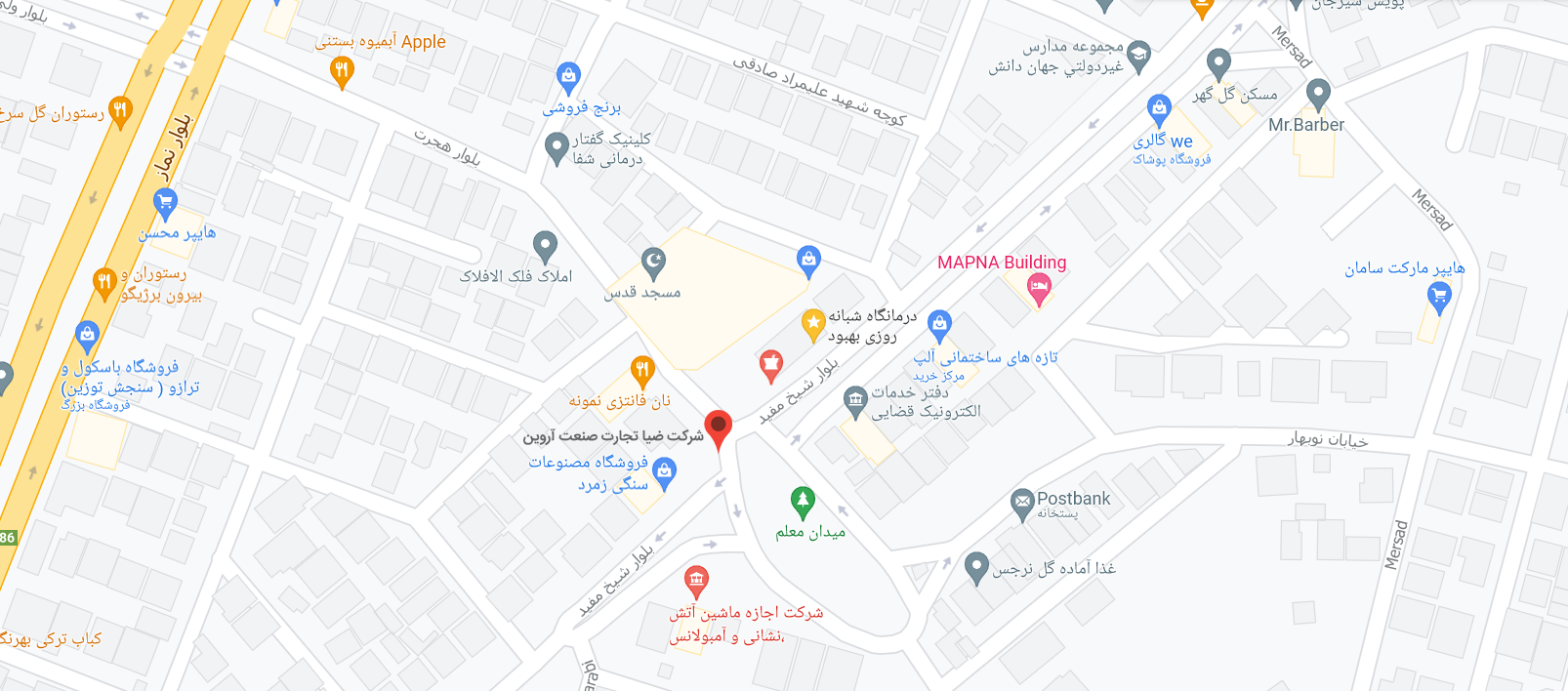Hydraulic
Hydraulics has been used by mankind for nearly five hundred years. Its basic principles were expressed by Pascal (French scientist) in 1650. (Fluid pressure at rest is transferred equally in all directions.)
After the discovery of oil derived from petroleum, this product replaced water as a medium of energy transfer, then over time, with the advancement of technology, the problems of sealing systems were solved, and in this way, the justification and acceptability of hydraulic systems increased day by day. During World War I, hydraulics were used extensively. From the middle of the 20th century, its acceptance and exploitation reached such a level that now every person can find an application of it near him.
Hydraulics is the technology of generating, controlling and transmitting power by fluid under pressure. Basically, what happens in hydraulic systems is the conversion of mechanical energy into hydraulic energy with the help of electric motors and combustion in power sources. By creating a relative vacuum, the mechanical components of the pump create atmospheric pressure, which leads to the movement of the fluid towards the pump inlet, so that the pump moves the fluid to other parts of the hydraulic system; Finally, the hydraulic power generated by the pump by the actuators, which includes the cylinder or hydraulic motor, converts it into the required mechanical power at the output.
Advantages of hydraulic system
A machine designer engineer is always involved in choosing the most appropriate system for energy transfer and control among electrical, mechanical, pneumatic or hydraulic systems. Of course, in many applications, the combination of the above systems is more effective and economical; For this reason, in order to better recognize the use cases of hydraulics, we mention its general advantages.
Simplicity of design
A hydraulic system has fewer moving parts and is very simple and efficient in terms of construction compared to similar mechanical types.
Ability to increase power
If needed, the forces can be increased even up to a hundred times in hydraulic systems.
Simplicity and accuracy of control
In hydraulic systems, large forces can be controlled by applying the lowest possible force. It is also possible to provide constant torque at variable speeds.
flexibility
The use of pipes and hoses instead of mechanical components has minimized positional problems and limitations, and in this way, a hydraulic system can be designed in a completely flexible way (in terms of position).
Efficiency
Hydraulic systems have high efficiency with low friction losses. Hydraulic systems also have many advantages from the point of view of reducing maintenance costs.
confidence
The use of safety valves and pressure and thermal switches has provided hydraulic systems with sufficient reliability against a sudden increase in load.
How does the hydraulic system work?
In general, a hydraulic system performs four basic tasks:
Converting mechanical energy into fluid power under pressure by means of pumps
Fluid transfer to desired points by pipes and hoses
Control of pressure, direction and fluid flow by valves
Doing work by actuators (hydraulic cylinders and motors)
Hydraulic system components
The components of a hydraulic system, regardless of their application, are divided into four main parts, which include:
Tank for holding fluid
A pump to flow fluid in the system, which is operated by an electric motor or another drive.
Valves to control the pressure, flow and direction of fluid movement
Actuators (cylinder to create linear movement or motor to produce rotational movement) to convert fluid energy under pressure into mechanical force producing work depending on the type of application, hydraulic systems have different complexities.
Hydraulic system components
There are three ways to transfer energy from one place to another, which are:
Mechanical, electrical transmission as well as transmission by pressurized fluid. In the table below, the components used in electric, mechanical and hydraulic power transmission methods are introduced and compared.
Components used in electrical, mechanical, hydraulic power transmission methods
Distribution or transmission of wires and cables, wheels, axles, gears, cams, wedges, screws, belts, etc., pipes and hoses
Control switches, transformers, regulators, relays, etc. The form of control components depends on space, weight, size, shape, etc. Pressure control valves, flow control and direction control
Actuators of solenoids and motors, wheels, pistons, levers, gears, etc., cylinders and hydraulic motors.
Energy storage, batteries, airplane wheels, warehouses and oil storage tanks
Safety devices, fuses and braking circuits, parts resistance, safety locks, safety valves, pressure switches and hydraulic fuses.
Efficiency of pumps
In general, the efficiency of a pump depends on the amount of tolerances and precision used in the construction, the mechanical condition of the components and the pressure balance. In an ideal pump, the backlash between the involved components is considered to be theoretically zero. In practice, the gaps should be as small as possible so that it is possible to create a thin film of oil to lubricate the components. Necessary information related to pump efficiency is always provided by manufacturers.
The volumetric efficiency determines the amount of leakage in the pump. The following relationship is effective for calculating volumetric efficiency:
Volume efficiency (percentage) = (actual pump flow rate)/(theoretic flow rate of the pump) x 100
Mechanical efficiency determines the amount of energy loss due to factors such as friction in bearings and involved components, as well as turbulence in the fluid. Mechanical efficiency
Pumps are usually between 90 and 95 percent. The method of calculating the mechanical efficiency is obtained according to the following relationship:
Mechanical efficiency (percentage) = (pump work for theoretical power requirement)/(pump to actual power data) x 100
The overall efficiency specifies the total energy loss and is equal to the product of volumetric and mechanical efficiency. To get the overall efficiency, we use the following relationship:
Overall efficiency = (mechanical efficiency x volumetric efficiency)/100
Hydraulic fluids
Hydraulic fluids are usually divided into three main categories, which include:
Mineral oils
Synthetic fluids
Water
Each hydraulic fluid in the system has three main roles, which are:
Power transmission or lubrication power components of hydraulic systems act like seals.
با توجه به اینکه سیال هیدرولیکی تاثیر زیادی روی کارایی، هزینه ی نگهداری و عمر اجزای هیدرولیکی دارند؛ انتخاب سیال مناسب هیدرولیک از اهمیت بالایی برخوردار است. لازم به تاکید است که تمامی محصولاتی که در بخش هیدرولیک مشاهده می کنید با روغن معدنی کار می کنند.
معیارهای انتخاب پمپ
همواره برای انتخاب یک محصول صنعتی در نظر گرفتن مجموعه ای از اطلاعات می تواند موثر واقع شود؛ از جمله عوامل موثر و اصلی در انتخاب انواع پمپ عبارت است از:
حداکثر فشار کاری، حداکثر دبی خروجی، نوع سیال (که در پمپ های هیدرولیک الزاما روغن هیدرولیک است)، اندازه و وزن، بازدهی پمپ، قابلیت دسترسی و تعویض اجزاء، نگهداری و قطعات یدکی، سر و صدای پمپ، قیمت پمپ؛ که هر کدام از موارد نام برده طبق نیاز مشتری می تواند اولویت بالاتری داشته باشد.





























